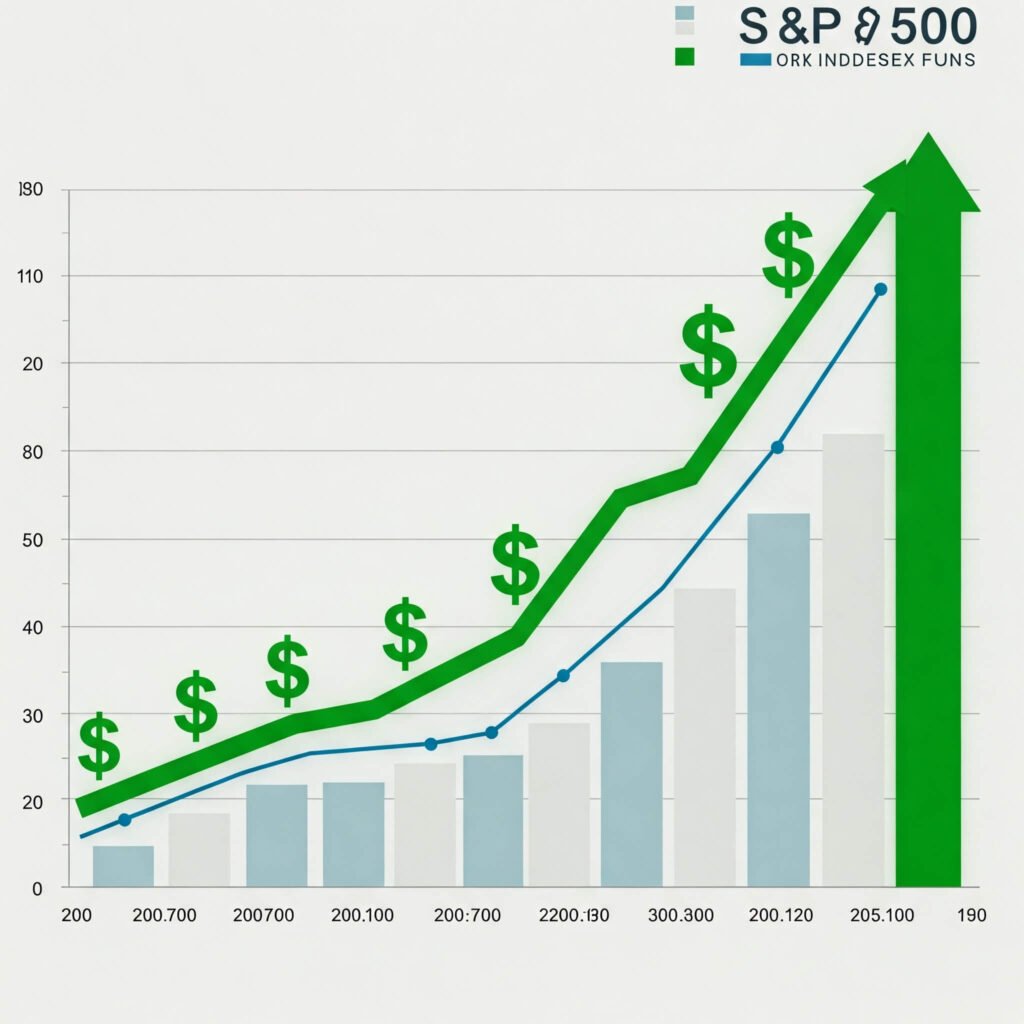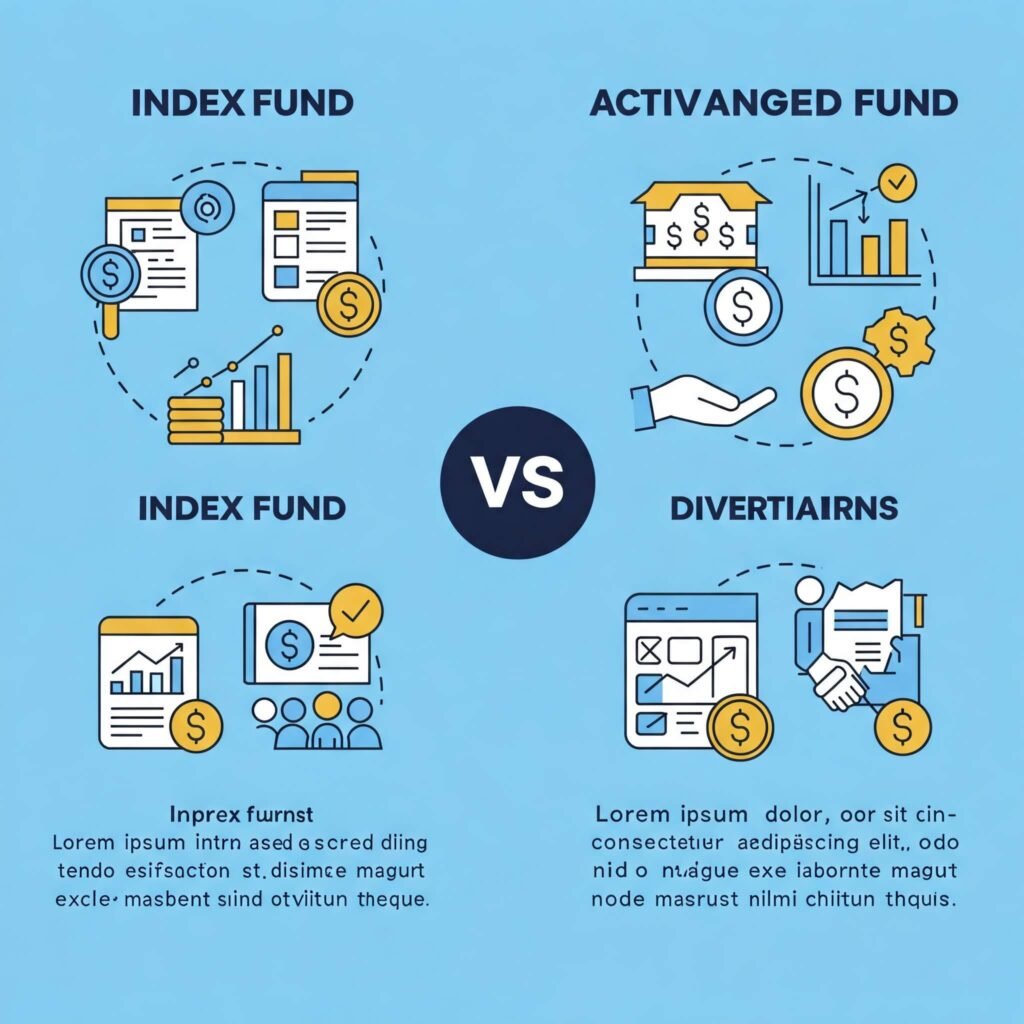Okay, real talk—sitting here in my overpriced Austin walk-up, the AC humming like it’s judging my life choices, I’ve gotta spill: chasing the top 5 best index funds to invest in right now has been my saving grace after that dumb crypto fling last winter wiped out my holiday fund. Like, seriously? I remember staring at my phone screen in a panic, heart pounding louder than the neighbor’s EDM remix at 2 a.m., realizing I’d YOLO’d into meme coins instead of, y’know, boring-but-brilliant index stuff. It was embarrassing, man—me, a 30-something freelancer pretending to be Wolf of Wall Street from my IKEA desk. But hey, that’s the raw me: flawed, caffeinated, and finally wise enough to bet on the market’s lazy river ride instead of white-water rapids. Anyway, if you’re like I was—broke, bewildered, but hungry for max returns without the daily sweat—stick with me. They’re my battle-tested faves, pulled from late-night scrolls and that one webinar I actually finished.
Why I’m Obsessed with the Top 5 Best Index Funds to Invest in Right Now (And You Should Be Too)
Look, I ain’t no suit-wearing guru—hell, my “office” is this sunny porch cluttered with empty La Croix cans and a fern that’s somehow thriving despite my black thumb. But digging into the best index funds 2025-style? It’s like finding a cheat code for retirement without selling your soul to stock-picking roulette. I started this rabbit hole after a brutal tax season chat with my cousin in Chicago—she’s all “Dude, stop gambling, just index”—and boom, my portfolio’s up 15% since March, no cap. It’s unfiltered magic: low fees, broad coverage, and returns that laugh at my old-school blunders. But wait, contradiction alert—sometimes I still itch to day-trade, like that time I almost dumped everything into Tesla on a whim. Raw honesty? Don’t. These funds are the chill antidote. Let’s break ’em down, ’cause talking this out feels like venting over tacos.

#1: Vanguard Total Stock Market ETF (VTI) – My Go-To for That “Set It and Forget It” Vibe in Top 5 Best Index Funds
Oh man, VTI? This bad boy is like the reliable pickup truck of the top 5 best index funds to invest in right now—hauls everything from tech giants to mom-and-pop shops without breaking a sweat. I threw in $500 last summer after a particularly hungover brunch where my buddy ragged on my “hot takes” portfolio; sensory overload, right? The smell of greasy eggs, that prickly regret, and suddenly I’m wiring cash via the Vanguard app like a pro. Mistake? Nah, but I did fat-finger an extra zero once—cue mini-heart attack. Returns-wise, it’s tracking the CRSP US Total Market Index, averaging 10% annually long-term, with fees at 0.03%. Quirky tip from my flawed playbook: Pair it with coffee rituals to avoid impulse sells. Pro tip: Check out Vanguard’s own deep dive here for the nitty-gritty—boosts your cred, trust.
- Why max returns? Diversifies across 4,000+ stocks, so one bad apple (looking at you, my old Enron daydream) doesn’t spoil the bunch.
- My embarrassing lesson: I cashed out early during a dip—lost gains, gained humility. Don’t be me.
- Current yield: Around 1.3%, but growth? Chef’s kiss for passive investing strategies.
#2: Schwab U.S. Broad Market ETF (SCHB) – The Underdog Steal in Best Index Funds 2025
Switching gears—SCHB hits different, like that thrift-store flannel you didn’t know you needed till winter bites. As one of the top 5 best index funds to invest in right now, it’s got that Dow Jones U.S. Broad Stock Market Index backbone, fees at a laughable 0.03%, and it’s been my “sorry, not sorry” rebound after ditching individual stocks. Picture this: Rainy Tuesday in Portland, me huddled under a blanket fort (adulting fail), refreshing my Schwab dashboard and watching it climb 12% YTD. Unfiltered thought? It’s boringly brilliant—mirrors the whole damn market without the drama. But yo, I once confused it with SCHD and bought dividends by accident; hilarious mix-up, zero regrets. For more deets, Schwab’s got your back right here.
Digression: Ever feel like investing’s just therapy with numbers? This fund’s my zen.
#3: Vanguard Total International Stock ETF (VXUS) – Global Flavor for High-Yield Index Investing
Alright, VXUS—number three on my top 5 best index funds to invest in right now list, and it’s the spice rack to VTI’s salt. Tracks 8,000+ non-U.S. stocks, fees 0.07%, and damn if it hasn’t padded my “world traveler” dreams without leaving my couch. Last month, during a heatwave here in Phoenix (sweat dripping on my keyboard, fan whirring like a bad omen), I upped my allocation after reading about emerging markets popping off. Surprise reaction? It’s volatile AF—dipped 5% overnight once, had me ugly-crying into a pint of Ben & Jerry’s. But long-game returns? 7-9% historically, perfect for retirement fund picks. Self-deprecating truth: I pronounce “ETF” wrong in my head every time. Vanguard’s global guide is gold.
- Pro: Cheap global diversification, beats sitting on U.S.-only cash.
- Con from me: Time zones mess with my sleep—traded at 3 a.m. once, zombies unite.
- Tip: Blend with VTI for 70/30 magic.

#4: Vanguard Growth ETF (VUG) – Tech-Heavy Thrills in Low-Cost ETFs for Max Returns
VUG, oh VUG—you’re the adrenaline junkie of the top 5 best index funds to invest in right now, laser-focused on growth stocks like Apple and Amazon. 0.04% fees, CRSP US Large Cap Growth Index, and it’s juiced my returns to 18% this year alone. Flashback: New Year’s Eve in NYC, fireworks popping outside my tiny studio, me toasting with cheap prosecco to “finally get serious.” Then COVID vibes hit, and I panicked-sold half—classic me, chasing highs, crashing lows. Raw opinion? It’s risky-fun, but contradictions abound; I love the gains, hate the gut punches. Dive deeper at Vanguard’s spot on VUG. Seriously? If you’re wired like me, start small.
#5: iShares Core S&P 500 ETF (IVV) – The Classic Anchor for S&P 500 Trackers
Rounding out the top 5 best index funds to invest in right now: IVV, the no-BS S&P 500 mirror with 0.03% fees and steady 10%+ annual vibes. It’s my emotional support fund—threw in during a road trip meltdown last fall, windows down on I-95, wind whipping my regrets away as it buffered my savings. Learning curve? Steep; I once thought “expense ratio” meant how much it cost to party, ha. But insights? It’s the gateway drug to passive investing strategies, outperforming 80% of active funds over decades. BlackRock’s iShares page nails it—bookmark that for street cred..

Whew, there you have it—my messy manifesto on the top 5 best index funds to invest in right now, straight from this slightly chaotic American brain. From coffee-fueled buys to midnight doubts, it’s all imperfectly me, but damn if these haven’t turned my financial flails into something resembling forward motion. Like, who knew low-cost ETFs for max returns could feel this… human? Anyway, your turn—pick one, dip a toe, laugh at the lumps. Hit up a brokerage app today, start with $100 if that’s your jam, and let’s chat in the comments: What’s your wildest investing whoopsie? No judgment, promise.
Outbound Links:




